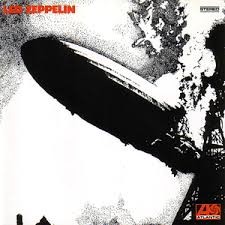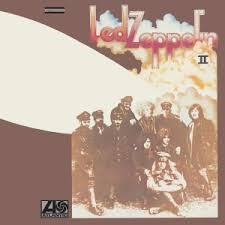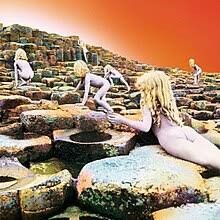The best of Led Zeppelin
The best of Led Zeppelin
- Led Zeppelin (1969) - Debut album featuring "Good Times Bad Times" and "Dazed and Confused." Certified 8× Platinum by the RIAA.
- Led Zeppelin II (1969) - Includes "Whole Lotta Love" and "Ramble On." Certified 12× Platinum by the RIAA.
- Led Zeppelin III (1970) - Known for "Immigrant Song" and "Since I've Been Loving You." Certified 6× Platinum by the RIAA.
- Led Zeppelin IV (1971) - Features hits like "Stairway to Heaven," "Black Dog," and "Rock and Roll." Certified 23× Platinum by the RIAA.
- Houses of the Holy (1973) - Contains "The Song Remains the Same" and "Over the Hills and Far Away." Certified 11× Platinum by the RIAA.
- Physical Graffiti (1975) - A double album with tracks like "Kashmir" and "Trampled Under Foot." Certified 16× Platinum by the RIAA.
- Presence (1976) - Contains "Achilles Last Stand" and "Nobody's Fault but Mine." Certified 3× Platinum by the RIAA.
- In Through the Out Door (1979) - Features "Fool in the Rain" and "All My Love." Certified 6× Platinum by the RIAA.
1. Led Zeppelin (1969)

Led Zeppelin's debut album, released in 1969, is a landmark in rock history. This self-titled album by Led Zeppelin showcases their raw energy and innovative sound, which would go on to define hard rock. Featuring the powerful vocals of Robert Plant, the intricate guitar work of Jimmy Page, the dynamic drumming of John Bonham, and the solid bass of John Paul Jones, this album is a must-listen for any rock music fan.
Recorded in 36 hours, "Led Zeppelin" blends blues, rock, and psychedelia, setting the stage for the band's future success. Songs like "Good Times Bad Times" and "Dazed and Confused" highlight their musical prowess and ability to create memorable riffs and solos. The album's production quality and musicianship were groundbreaking for the time, influencing countless bands. "Led Zeppelin" is essential for understanding the roots of hard rock and the evolution of the genre in the late 1960s.
2. Led Zeppelin II (1969)

Led Zeppelin II, released in 1969, is a pivotal album in rock music history. This album by Led Zeppelin solidified the band's place as rock legends. Known for its powerful riffs, blues influences, and groundbreaking production, Led Zeppelin II features the iconic guitar work of Jimmy Page, Robert Plant's electrifying vocals, John Bonham's thunderous drumming, and John Paul Jones' solid bass lines.
The album is famous for its raw energy and innovative recording techniques, including the use of studio effects that were ahead of its time. Tracks like "Whole Lotta Love" showcase the band's ability to blend heavy rock with blues elements, creating a sound that was both fresh and influential. Led Zeppelin II's success helped to define the hard rock genre and influenced many future artists. For fans, this album is a must-listen, capturing Led Zeppelin at a crucial point in their early career.
3. Led Zeppelin III (1970)

Led Zeppelin III, released in 1970, marked a notable shift in Led Zeppelin's musical style. Moving away from the hard rock sound that defined their earlier work, this album explores acoustic and folk influences. Jimmy Page's exceptional guitar work and Robert Plant's versatile vocals shine through in this more introspective and experimental album. John Bonham's dynamic drumming and John Paul Jones' multi-instrumental talents further enrich the band's sound.
The album's innovative blend of rock, folk, and blues elements demonstrated Led Zeppelin's versatility and willingness to push musical boundaries. Led Zeppelin III is renowned for its rich acoustic arrangements and lyrical depth, offering a contrast to the heavier riffs of their previous albums. The incorporation of mandolins, pedal steel guitars, and a range of acoustic instruments helped to create a diverse and textured sound.
Led Zeppelin III was initially met with mixed reviews but has since been recognized as a groundbreaking work that expanded the possibilities of rock music. This album is essential for fans who want to explore the full range of Led Zeppelin's creative genius and their ability to innovate within the rock genre.
4. Led Zeppelin IV (1971)

Led Zeppelin IV, released in 1971, is often hailed as one of the greatest rock albums of all time. This iconic album by Led Zeppelin features a perfect blend of hard rock, folk, and blues, showcasing the band's unparalleled musical talent. The album includes some of their most famous songs, with Robert Plant's powerful vocals and Jimmy Page's masterful guitar work taking center stage.
John Bonham's drumming and John Paul Jones' versatile musicianship provide a solid foundation, creating a rich and dynamic sound. Led Zeppelin IV's production quality and innovative arrangements set a new standard in rock music. The album's influence is far-reaching, inspiring countless musicians and bands across various genres.
The timeless appeal of Led Zeppelin IV lies in its ability to transcend musical boundaries, making it a must-listen for any rock music enthusiast. Its enduring legacy continues to captivate new generations of fans, solidifying Led Zeppelin's place in rock history.
5. Houses of the Holy (1973)

Houses of the Holy, released in 1973, showcases Led Zeppelin's continued evolution as one of rock's most innovative bands. This album highlights the group's versatility, blending rock, reggae, funk, and progressive elements. Jimmy Page's inventive guitar work and Robert Plant's dynamic vocals are central to the album's distinctive sound. John Bonham's powerful drumming and John Paul Jones' multifaceted musicianship enhance the overall richness of the music.
The album's production is notable for its polished sound and experimental approaches, moving away from the rawness of their earlier work. Led Zeppelin's willingness to explore different musical styles while maintaining their rock roots is evident throughout Houses of the Holy. This album includes fan favorites that remain staples in their live performances, demonstrating the band's ability to create enduring and memorable music.
Houses of the Holy solidifies Led Zeppelin's reputation for pushing the boundaries of rock music. It's an essential listen for fans who appreciate the band's innovative spirit and musical prowess.
6. Physical Graffiti (1975)

Physical Graffiti, released in 1975, stands as one of Led Zeppelin's most ambitious and accomplished albums. This double album captures the band at the height of their creative powers, blending rock, blues, folk, and funk into a cohesive masterpiece. Jimmy Page's exceptional guitar work, Robert Plant's powerful vocals, John Bonham's dynamic drumming, and John Paul Jones' versatile musicianship are all showcased brilliantly across the album.
The production quality of Physical Graffiti is remarkable, highlighting the band's meticulous attention to detail and innovative studio techniques. The album's diverse soundscapes range from hard-hitting rock anthems to intricate acoustic pieces, demonstrating Led Zeppelin's unparalleled ability to push musical boundaries while maintaining their distinctive style.
Physical Graffiti received widespread critical acclaim and commercial success, solidifying Led Zeppelin's legacy as one of rock's greatest bands. For fans of rock music, this album is essential listening, offering a comprehensive look at the band's extraordinary talent and their influence on the genre.
7. Presence (1976)

Presence, released in 1976, showcases Led Zeppelin's raw power and resilience during a turbulent time for the band. Created during Robert Plant's recovery from a car accident, the album is marked by a sense of urgency and intensity. Jimmy Page's guitar work is particularly dominant, delivering some of his most aggressive and intricate riffs. Robert Plant's vocals, despite his condition, remain powerful and emotive.
John Bonham's drumming is as thunderous as ever, and John Paul Jones' bass and keyboard contributions provide a solid foundation. The production of Presence focuses on a stripped-down, hard rock sound, deviating from the more experimental and diverse approaches of their previous albums.
Presence received mixed reviews upon release but has since been appreciated for its raw energy and the band's tight performance. For fans of Led Zeppelin, this album offers a deep dive into the band's hard rock roots and their ability to create compelling music even under challenging circumstances.
8. In Through the Out Door (1979)

In Through the Out Door, released in 1979, is Led Zeppelin's final studio album before drummer John Bonham's death. This album is a significant departure from their previous work, incorporating more synthesizers and keyboards, largely driven by John Paul Jones' creative input. The result is a unique blend of rock, pop, and experimental sounds that showcases the band's versatility.
Robert Plant's vocals and Jimmy Page's guitar work remain central to the album's identity, but the shift towards more melodic and textured compositions is evident. The production quality is polished, reflecting the band's desire to explore new musical territories. Despite mixed initial reviews, In Through the Out Door was a commercial success, topping charts and demonstrating Led Zeppelin's enduring popularity.
For fans and newcomers alike, this album provides a glimpse into Led Zeppelin's ability to innovate and adapt, even towards the end of their career. It is a testament to their musical evolution and lasting impact on the rock genre.
Recent Posts
Queen studio albums: A Review
Phil Collins Albums Ranked & Reviewed – Complete Guide to Every Studio Album
The best of Massive Attack
Let’s Make Magic
Book Your Event DJ Now




